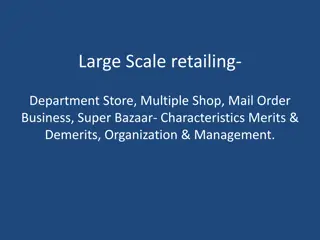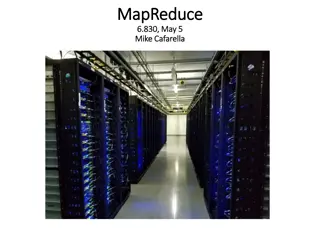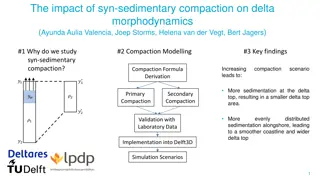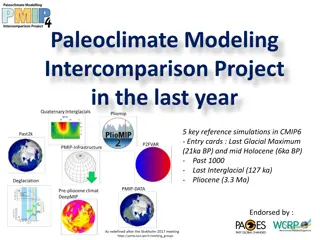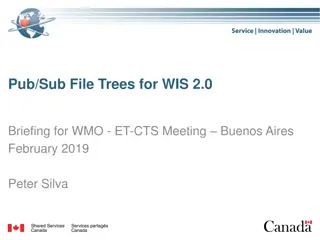Understanding Holocene Paleoenvironments in Large Prograding Deltas
Utilizing stratigraphic cores from delta sediments to investigate peat, mud, and soil sequences for paleoenvironment determination, peat formation processes, depositional mechanisms, carbon dating, and elevation changes. Sampling locations, such as the Mississippi and Rhine-Meuse deltas, offer tectonically stable settings for high-resolution Holocene records. Studies in the Rhine-Meuse Delta reveal sea level rise events, while investigations in the Mississippi Delta focus on agglutinated taxa and calcareous forams to trace sea level changes. References by Hijma (2010) and Li et al. (2011) provide insights into sea-level jumps and abrupt cooling events in the past.
Download Presentation

Please find below an Image/Link to download the presentation.
The content on the website is provided AS IS for your information and personal use only. It may not be sold, licensed, or shared on other websites without obtaining consent from the author. Download presentation by click this link. If you encounter any issues during the download, it is possible that the publisher has removed the file from their server.
E N D
Presentation Transcript
Using the Stratigraphic Record Cores from the sediments of deltas examined for peat, mud, and soils Transgressive sequences Determine the paleoenvironment Peat formation Depositional processes Carbon dating Elevations & Surveying
Where to sample Best Holocene record in large prograding deltas Need microtidal settings for high resolution Tectonically stable through the Holocene Mississippi delta and Rhine-Meuse delta
Locations Yong-Xiang, 2011 Hijma, 2010
Rhine-Meuse Delta Preservation of sediments 13-25 m depth (bsl) Average age 8450 44 yr BP Early 8385 16 yr Late 8522 37 yr Top of peat layer Change in elevation 4.06 0.5 m in record 2.11 0.89 m for sea level rise two events Change in age 195 68 yr ~3 m 1.25 m sea level equivalent, 70 % of sea level rise observed 100 years before Mississippi?
Mississippi Delta Intertidal range (current average 0.47 m) Agglutenated taxa, followed by calcareous forams Short pulse of near instantaneous sea level rise 8.18 8.31 ka Mean elevation difference 0.33 0.23 m Deeper stratigraphy, older range 8.54 8.38 ka Assumed fingerprint of 0.25 0.8 0.22 m of sea level rise 0r sea level equivalent Smaller than Rhine-Meuse study
References Hijma, M.P., 2010, Timing and Magnitude of the Sea-level Jump Precluding the 8200 yr Event, Geology 2010;38;275-278 Yong-Xiang, Li et al, 2011, Synchronizing a Sea-level Jump, Final Lake Agassiz Drainage, and Abrupt Cooling 8200 years ago, Earth and Planetary Science Letters 315-316 (2012) 41-50.






